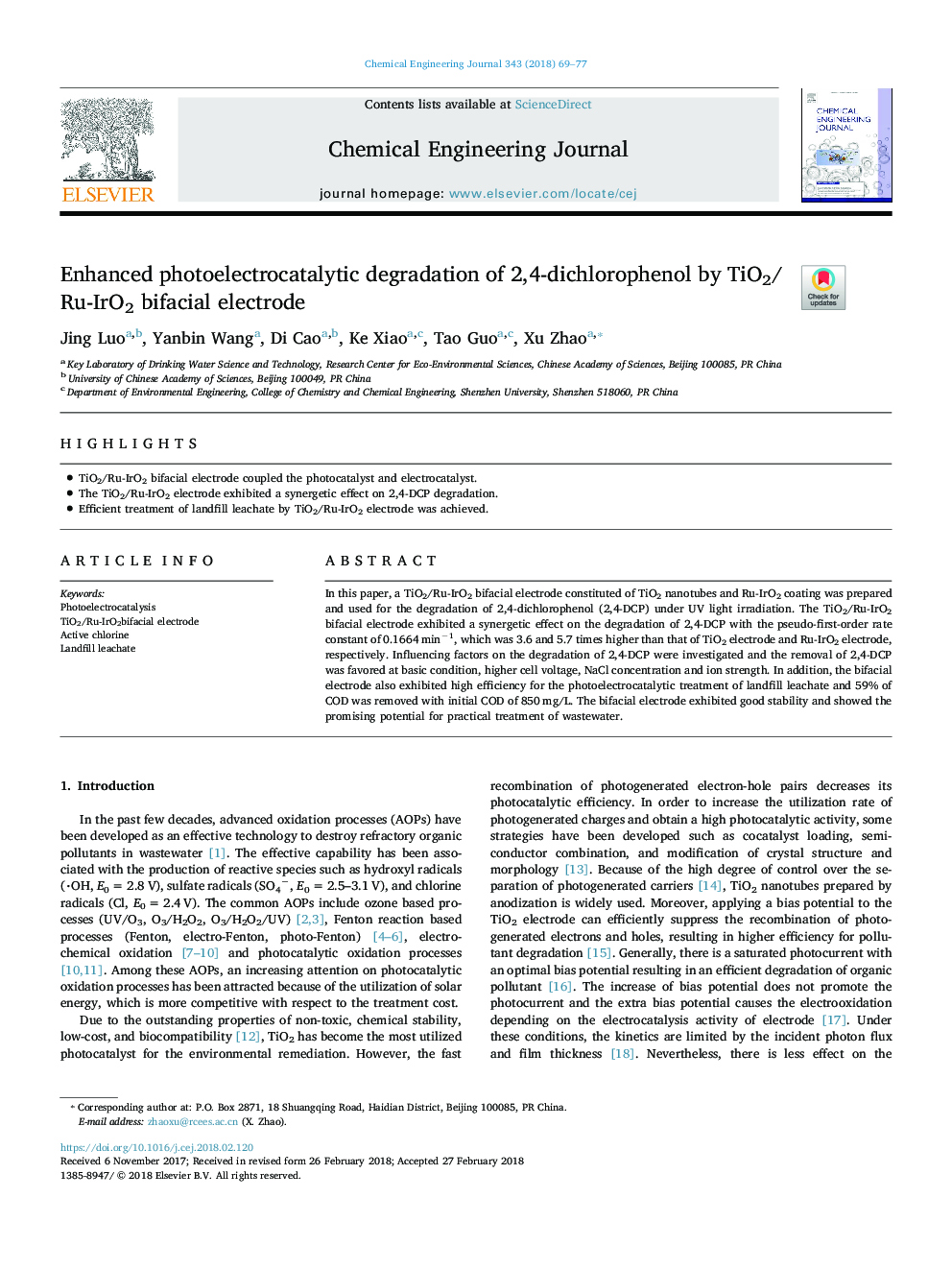| Article ID | Journal | Published Year | Pages | File Type |
|---|---|---|---|---|
| 6579611 | Chemical Engineering Journal | 2018 | 9 Pages |
Abstract
In this paper, a TiO2/Ru-IrO2 bifacial electrode constituted of TiO2 nanotubes and Ru-IrO2 coating was prepared and used for the degradation of 2,4-dichlorophenol (2,4-DCP) under UV light irradiation. The TiO2/Ru-IrO2 bifacial electrode exhibited a synergetic effect on the degradation of 2,4-DCP with the pseudo-first-order rate constant of 0.1664â¯minâ1, which was 3.6 and 5.7 times higher than that of TiO2 electrode and Ru-IrO2 electrode, respectively. Influencing factors on the degradation of 2,4-DCP were investigated and the removal of 2,4-DCP was favored at basic condition, higher cell voltage, NaCl concentration and ion strength. In addition, the bifacial electrode also exhibited high efficiency for the photoelectrocatalytic treatment of landfill leachate and 59% of COD was removed with initial COD of 850â¯mg/L. The bifacial electrode exhibited good stability and showed the promising potential for practical treatment of wastewater.
Related Topics
Physical Sciences and Engineering
Chemical Engineering
Chemical Engineering (General)
Authors
Jing Luo, Yanbin Wang, Di Cao, Ke Xiao, Tao Guo, Xu Zhao,
